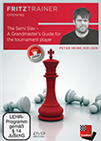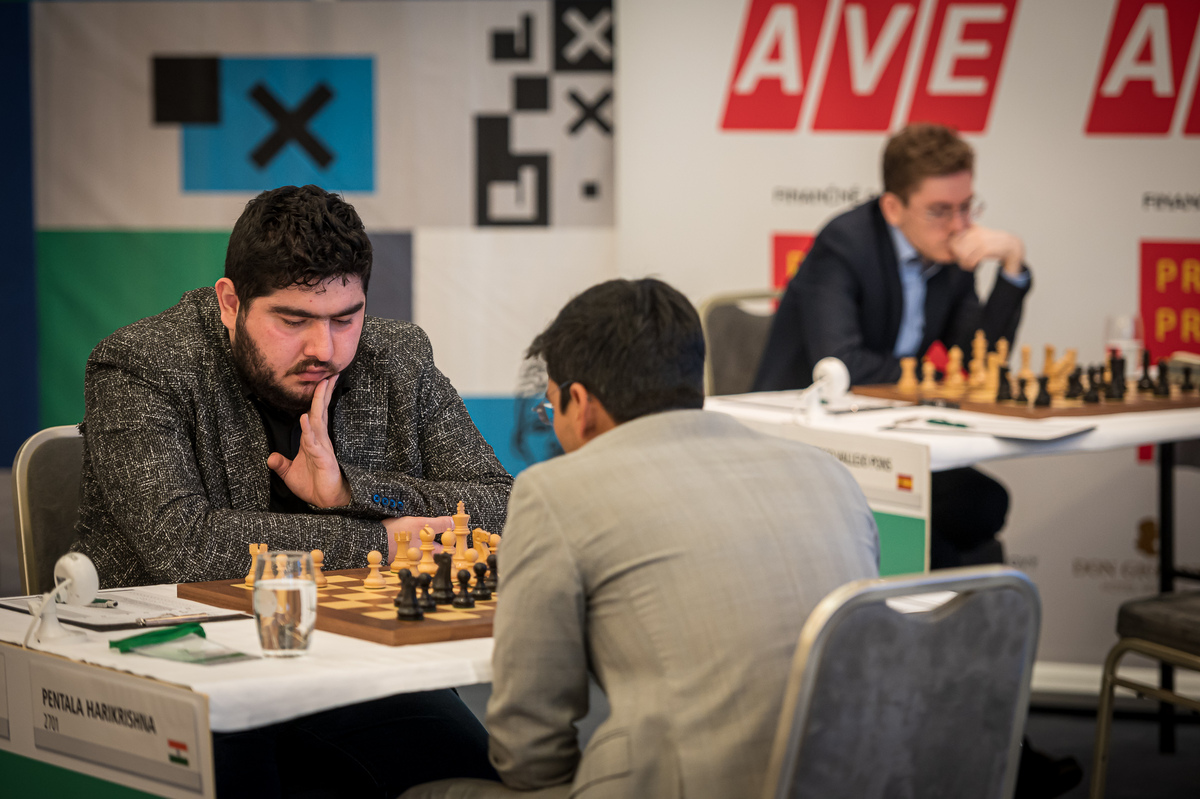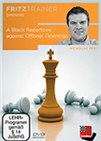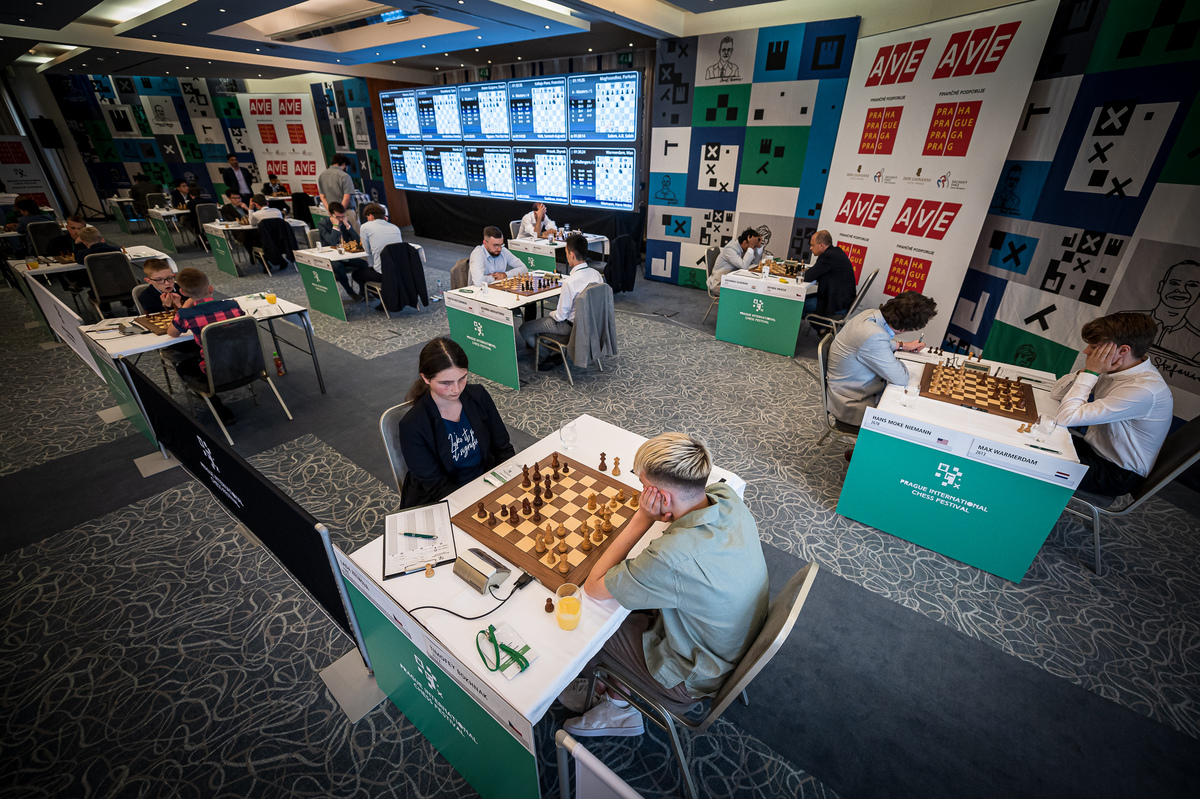Hari’s marathon win
All six decisive games in the first three rounds of the Masters tournament at the Prague Chess Festival saw the player marshalling the white pieces getting the full point. In Saturday’s fourth round, on the other hand, two out of three decisive games were won by the black player. Paco Vallejo beat David Anton in the all-Spanish confrontation, while Pentala Harikrishna joined Le Quang Liem in the lead by beating Parham Maghsoodloo.
 The Semi-Slav (1.d4 d5 2.c4 c6 3.Nf3 Nf6 4.Nc3 e6) can arise via various move orders, has decided World Championships, and is one of Black's most fascinating replies to 1 d4. Magnus Carlsen's second, Grandmaster Peter Heine Nielsen explains in detail what this opening is all about.
The Semi-Slav (1.d4 d5 2.c4 c6 3.Nf3 Nf6 4.Nc3 e6) can arise via various move orders, has decided World Championships, and is one of Black's most fascinating replies to 1 d4. Magnus Carlsen's second, Grandmaster Peter Heine Nielsen explains in detail what this opening is all about.Harikrishna worked hard during five hours before securing the win over Maghsoodloo. Out of a Slav Defence, White castled queenside, and a closed structure appeared on the board. Black was two pawns down and had his knights on a8 and b8 at some point in the game — Hari knew that such a strategy was acceptable given the circumstances, though.
Black began to untangle his position with 27...c5, and the manoeuvring struggle continued.
Shortly before reaching the time control, Maghsoodloo played an imprecise move, which allowed his more experienced opponent to greatly constrain White’s position.
38.Bf3 (instead of the correct 38.Bd3) allowed Black to play the good-looking 38...Ra1, when White cannot capture the rook with 39.Rxa1 due to 39...Nc2+ 40.Ka5 Ra8#. Note how Maghsoodloo’s king is ‘walled off’ on b4, unable to move either to the a-file or the c-file.
Such a binding position is difficult to handle for both sides. The engines evaluated the setup as favourable for Black for a while, but Maghsoodloo ably created counterplay on the kingside to regain a dynamic balance.
The complex battle continued, until it all came down to an extremely rare ending: Hari had two knights and king against Maghsoodloo’s pawn and king.
With five men on the board, tablebases give a perfect assessment of these positions — but finding the precise moves over the board is extremely difficult for both sides. The piece constellation in the diagrammed position was reached on move 57, and now, eight moves later, tablebases evaluate this setup as drawn.
However, only 66.Kh7 draws for White. The young Iranian went for 66.Kh6 instead, and Harikrishna began to make progress. The Indian GM also played an imprecision shortly after in 69...Nf7, but his opponent did not find the refutation. On move 74, Maghsoodloo resigned with mate-in-three on the board.
There might follow 75.Kh7 Nf6+ 76.Kh8 Nh4 77.b6 Ng6# 0-1

Parham Maghsoodloo and Pentala Harikrishna | Photo: Petr Vrabec
Round 4 results - Masters
Standings after round 4
All games
Keymer sole leader in the Challengers
After winning his first two games, both with the white pieces, Vincent Keymer drew Jergus Pechac and rating favourite Hans Niemann to go into the rest day as the sole leader with 3 points to his name. Pechac and Nodirbek Abdusattorov stand a half point back, in a field that does not include any player with anything worse than a -1 score (i.e., 1½/4 points).
 Many club players have their favourite pet opening variations which aren’t necessarily main lines. It’s important to know how to handle these variations as your opponent will likely know his systems well. In this DVD, GM Nicholas Pert provides a detailed Black repertoire against many of these Offbeat Opening choices.
Many club players have their favourite pet opening variations which aren’t necessarily main lines. It’s important to know how to handle these variations as your opponent will likely know his systems well. In this DVD, GM Nicholas Pert provides a detailed Black repertoire against many of these Offbeat Opening choices.Niemann, who lost in the second round against Jiri Stocek, bounced back with a victory over Max Warmerdam. The youngsters entered a forcing, sharp line in the opening, and they followed theory until move 22 — although, given how long they spent on each decision starting at around move 10, they apparently did not know that the same sequence had already been played in a 2013 correspondence game.
Only at this point did Niemann played a novelty, as he deviated from 22.Qe2 with 22.Qxf7+, and a double-rook endgame emerged after 22...Kxf7 23.Bc4+ Rxc4 24.Rxb6 Rd7 25.Rfb1 Rcc7
As so often happens, a sharp skirmish in the opening can lead to a purely technical, simplified position. But, as Magnus Carlsen has demonstrated throughout his career, being able to find small chances in ‘dry’ positions is an extremely valuable asset for a chess player.
In this case, Niemann outplayed his Dutch opponent to grab his first full point of the event.

The playing hall during Friday’s third round | Photo: Petr Vrabec
Round 4 results - Challengers
Standings after round 4
All games
Links
.jpeg)
























